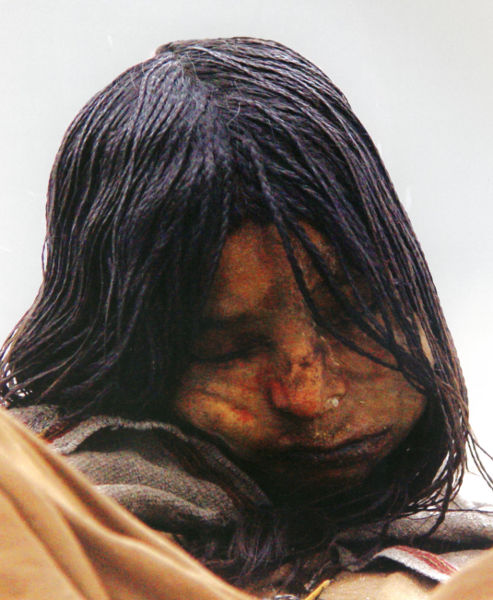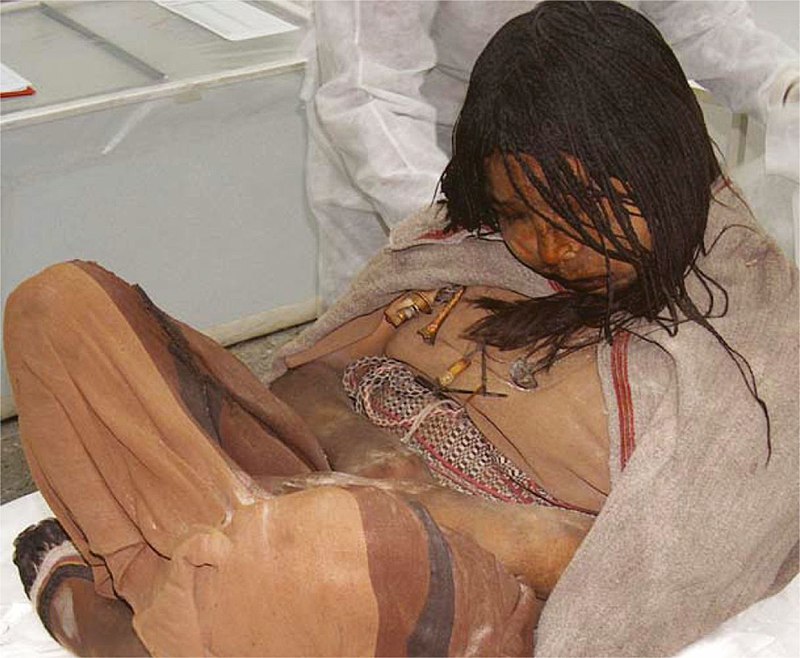The Children of Llullaillaco, also known as the Sacrificed Spirits, are a group of three Inca children whose remarkably preserved mummies were discovered atop Mount Llullaillaco in the Andes of Argentina. This archaeological find has sparked fascination and debate, shedding light on the ancient rituals and beliefs of the Inca Empire. The story of these sacrificed children provides a window into the religious practices, social dynamics, and cultural significance of human sacrifice in pre-Columbian South America.
The Inca Empire, at its peak in the 15th and early 16th centuries, spanned a vast territory encompassing modern-day Peru, Ecuador, Bolivia, Chile, and parts of Argentina and Colombia. The Inca civilization was characterized by a complex social hierarchy, sophisticated engineering and agricultural practices, and a deeply ingrained religious worldview centered around the worship of nature and celestial forces.
Central to Inca religion was the concept of reciprocity between humans and the divine. The Inca believed that offerings and sacrifices were necessary to maintain harmony with the natural world and ensure the favor of the gods. These offerings took various forms, including agricultural products, textiles, and, in some cases, human beings.
The practice of human sacrifice, known as capacocha in Quechua, the language of the Inca, was reserved for special occasions and ceremonies of great significance. One such occasion was the accession of a new ruler or the death of a royal figure, where sacrifices were made to accompany the deceased into the afterlife and ensure their continued well-being in the spiritual realm.
The Children of Llullaillaco were likely part of a capacocha ritual associated with the Inca imperial cult. They were carefully selected and prepared for their role as sacred offerings, a process that involved months of ceremonial rituals, feasting, and spiritual guidance. The children, two girls aged approximately six and 13, and a boy aged around seven, were dressed in elaborate textiles and adorned with precious ornaments, symbolizing their elevated status as offerings to the gods.
The mummification of the Children of Llullaillaco was a natural process facilitated by the extreme cold and arid conditions of Mount Llullaillaco, which stands at over 22,000 feet (6,700 meters) above sea level. The high-altitude environment, with its freezing temperatures and low oxygen levels, preserved the children’s bodies, clothing, and belongings in astonishing detail, providing archaeologists with invaluable insights into ancient Andean culture and customs.
The discovery of the mummies in 1999 by archaeologist Johan Reinhard and his team captivated the world and sparked intense scientific and ethical debates. The meticulous excavation and study of the Children of Llullaillaco have yielded a wealth of information about Inca society, including their religious beliefs, social structure, and funerary practices.

The analysis of the mummies’ remains and grave goods revealed clues about their identities, health, and upbringing. Isotopic studies of their hair and teeth indicated that they were raised in the Cusco region, the heartland of the Inca Empire, and likely belonged to noble or elite families. The presence of coca leaves and corn beer in their burial bundles suggests they were sedated and given ceremonial offerings before their sacrifice, a practice designed to ensure their compliance and spiritual purity.
The Children of Llullaillaco were not the only individuals sacrificed by the Inca; similar rituals were conducted throughout the empire, involving both children and adults. These sacrifices were perceived as acts of great honor and privilege, as those chosen to be sacrificed were believed to become intermediaries between the earthly realm and the divine, conveying messages and blessings to their communities.
The discovery of the Children of Llullaillaco has prompted discussions about the ethics of excavating and studying human remains, particularly when they are associated with sacrificial practices and religious beliefs. Some argue that such research is essential for understanding ancient cultures and preserving their heritage, while others raise concerns about cultural sensitivity and the treatment of human remains.
In recent years, efforts have been made to repatriate and reinter the mummies of the Children of Llullaillaco, respecting the wishes of indigenous communities and acknowledging the spiritual significance of these individuals. Museums and institutions housing the mummies have engaged in dialogue with indigenous representatives to find mutually acceptable solutions that balance scientific inquiry with cultural respect.
The legacy of the Children of Llullaillaco endures as a testament to the complexity and richness of Andean civilizations. Their sacrifice, while tragic from a modern perspective, reflects the deeply ingrained religious beliefs and practices of the Inca Empire, where offerings to the gods were seen as essential for maintaining cosmic order and ensuring the prosperity of the community.
